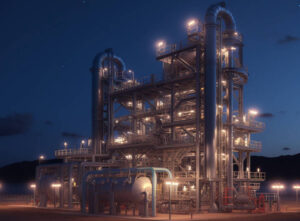Welcome to Extreme Investor Network, where we provide unique insights and analysis on the latest happenings in the stock market, trading, and all things Wall Street. Today, we’re diving into the recent developments in the natural gas market and how various factors are influencing prices.
One key factor driving the decline in natural gas prices is the mild weather that has been prevalent across much of the United States. With temperatures staying unseasonably warm in many regions, the need for heating has been limited, impacting overall demand for natural gas. This trend has led to traders focusing on selling into short-lived rallies, with resistance at $2.610 being a significant technical level to watch.
Adding to the bearish trend was Hurricane Milton, a Category 4 storm that disrupted natural gas markets by knocking out power to millions of homes and businesses in Florida. While the storm did not impact production areas in the Gulf of Mexico, the sharp reduction in demand weighed heavily on prices. Despite attempts to stabilize as power was restored, the overall supply-demand balance remained unfavorable for any sustained price recovery.
Furthermore, the latest U.S. Energy Information Administration (EIA) storage report showed an injection of 76 billion cubic feet for the week ending October 11, pushing total working gas in storage to 3,705 Bcf—higher than last year and above the five-year average. These elevated storage levels have added pressure to the market, limiting any upside potential and reinforcing a bearish tone heading into the winter heating season.
In conclusion, the near-term outlook for natural gas remains bearish with downside risk. Stay tuned to Extreme Investor Network for more in-depth analysis and expert insights on the stock market and trading. Be sure to subscribe to our newsletter to receive exclusive content and updates straight to your inbox. Happy investing!

